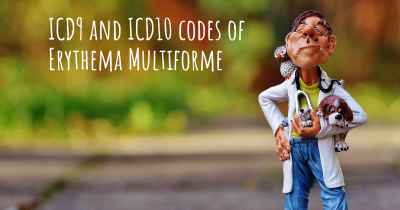What is the history of Erythema Multiforme?
When was Erythema Multiforme discovered? What is the story of this discovery? Was it coincidence or not?

Erythema multiforme (EM) is a skin condition characterized by the development of distinctive skin lesions. The history of EM dates back to the late 19th century when it was first described by two dermatologists, Ferdinand von Hebra and Paul G. Unna, independently of each other.
Ferdinand von Hebra, an Austrian dermatologist, first observed and documented cases of EM in the 1860s. He described the condition as "erythema exudativum multiforme" due to the various shapes and patterns of the skin lesions. Von Hebra noted that the lesions appeared in response to certain infections, medications, and other triggers.
Paul G. Unna, a German dermatologist, also independently recognized and reported cases of EM around the same time. Unna referred to the condition as "erythema polymorphe" and emphasized the involvement of the mucous membranes in addition to the skin.
Throughout the early 20th century, further research and clinical observations were conducted to better understand EM. It was during this time that the term "erythema multiforme" became widely accepted and used to describe the condition.
Erythema multiforme is characterized by the presence of target-like skin lesions, which consist of concentric rings of different colors. These lesions typically appear on the extremities, face, and trunk. The condition is often associated with an immune-mediated response triggered by various factors, including infections (such as herpes simplex virus and Mycoplasma pneumoniae), medications (such as antibiotics and anticonvulsants), and other underlying diseases.
In the mid-20th century, further advancements were made in understanding the pathogenesis and classification of EM. It was recognized that there are two distinct forms of EM: erythema multiforme minor and erythema multiforme major.
Erythema multiforme minor is the milder form of the condition, characterized by the presence of typical target lesions on the skin without significant mucous membrane involvement. It is often self-limiting and resolves within a few weeks without any long-term complications.
Erythema multiforme major, on the other hand, is a more severe form of the condition. It is characterized by the presence of extensive mucous membrane involvement, particularly in the oral cavity and genital areas. This form of EM can be associated with systemic symptoms, such as fever and malaise. In some cases, it can progress to a life-threatening condition known as Stevens-Johnson syndrome (SJS) or toxic epidermal necrolysis (TEN).
Over the years, research has focused on identifying the underlying mechanisms and triggers of EM. It is now understood that EM is primarily an immune-mediated disorder, involving a complex interplay between genetic predisposition and environmental factors. The exact pathogenesis of EM is still not fully elucidated, but it is believed to involve a hypersensitivity reaction and immune complex deposition.
Treatment of EM depends on the severity and underlying cause. In mild cases, symptomatic relief and supportive care are usually sufficient. Severe cases may require hospitalization and the use of systemic corticosteroids or other immunosuppressive medications to control the immune response.
In conclusion, the history of erythema multiforme dates back to the late 19th century when it was first described by Ferdinand von Hebra and Paul G. Unna. Since then, significant progress has been made in understanding the condition, its classification, and treatment options. Ongoing research continues to shed light on the underlying mechanisms of EM, paving the way for improved management and care of individuals affected by this skin disorder.
Posted May 29, 2017 by Krista 2270








